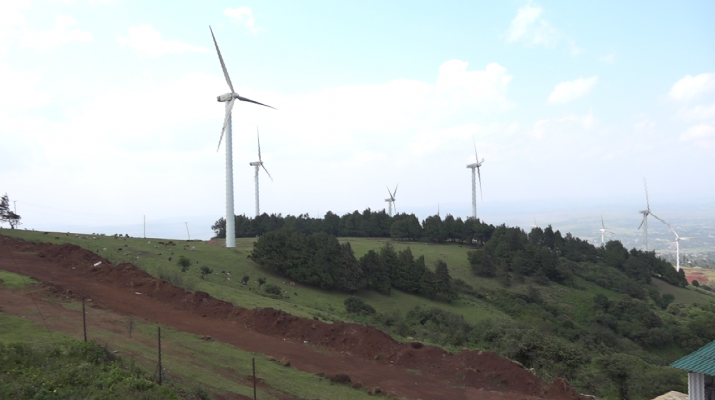By Anne Macharia
Kenya is ranked second to South Africa in clean energy investment in the continent and sixth globally. $3.6B has been invested in Kenya’s clean energy from 2009 – 2014. But even with the massive investments and projects, it is clear electricity production will need to grow at a faster rate as demand grows.
The country’s ambitious plan of raising electricity capacity from the current 2.4GW to 22.7GW by 2030 is pegged on producing cheaper sustainable energy, improving distribution and exploring clean energy.
The government, through the National Energy Police, has set lofty targets for its geothermal, wind and solar resources, aiming to collectively produce 9GW by 2030. Anne Macharia talks to Robert Wilson, Programme Director, Green Power Global, on the opportunities, challenges and the current status of renewable energy in Kenya.
What is the viability of Kenya developing and exporting its power as neighboring countries expand their capacity?
Given that Kenya Power’s exports to Tanzania and Uganda have grown substantially in the last year we should still consider exporting power regionally a highly viable option. Naturally, the extent to which it remains viable depends on how energy demand grows in neighboring countries, as well as how they develop their own energy infrastructure. Exporting more power could potentially provide an ideal solution for Kenya as it seeks to grow its production capacity, yet does not always see its demand rise in sync.
How can Kenya build local expertise in the renewable energy sector?
We already see and know of moves to build expertise locally in the renewable sector, notably with the likes of Strathmore University and its Energy Research Centre providing valuable technical training in the space. Like anywhere it will simply be a process requiring multi-stakeholder effort – a combination of private and public sector working together to share and build expertise. Also, and perhaps most critically, international companies with rich experience in the space sharing their expertise with locals will play a major role.
Is Kenya attracting enough investments to fund renewable energy projects?
There are a number of factors at play here. Firstly, seeing projects such as Lake Turkana come on-line will undoubtedly raise investor confidence that projects can be completed and that the grid can absorb their energy. Added to this, it is important for investors to see a sustained growth in energy demand and a grid infrastructure to support new developments. Regulatory clarity on land, licenses and permits will also help boost investor confidence and appetite.
Currently we know there are a lot of MOUs out there for wind and solar projects, as well as a number of PPAs for utility-scale projects, but for investors to make the next big move these initial projects need to become bankable and reach completion – once this has happened we will have some proven case studies which give confidence to investors that projects can and do happen. Once at this point, we will see more equity in the space, in turn facilitating more debt financing on favorable terms.
From a regulation/policy point of view, what are some of the incentives power producers in Kenya can take advantage off?
Without a doubt the 20-year feed-in-tariff for renewable energy. It gives power producers a guaranteed price for the electricity they produce, reducing risk and uncertainty and helping long-term planning. Added to this the government has shown a clear commitment to renewables with bold targets for wind, geothermal and solar power generation.
What are some of the bottlenecks that prevent the faster adoption of green power projects?
Local stakeholder relations and land issues pose a thorn-in-the-side for many projects. Ensuring a project has local buy-in and the correct land access rights is critical, and if a local community does not favor a project the consequences can be grave, for example, the Kinangop Wind Farm.
Additionally, demand for electricity can also cause projects to stall, without a clear energy demand projects will not easily be able to achieve bankability.
What is the business case for small-medium green power independent producers? What are the opportunities?
The opportunities for smaller scale (i.e. nonutility scale) renewables in Kenya are vast. Notably, the potential for renewables to function as an energy solution at the commercial and industrial scale drives this potential. Currently, a lot of large energy users such a tea and flower farms or factories have to rely on grid electricity which is not always reliable, nor cost effective. Renewables such as solar provide a great opportunity for large energy users to take control of their energy supply, guaranteeing a cost-effective steady supply of electricity with the added potential to sell any excess.
Smaller scale renewables and commercial scale projects also provide a potential stepping stone for future utility-scale projects. By this I mean it gives developers, EPCs and solution providers an opportunity to build a footprint and expertise in the Kenyan renewable space in anticipation of future energy demand stimulating a growth of larger scale projects.
What is Kenrec and what will it aim to achieve in Kenya and the region?
KENREC – the Kenya International Renewable Energy Congress draws on our 13 years of providing specialist business intelligence and business matchmaking events in the global renewable energy space, in particular in growth markets. It serves as a platform for senior-level decision makers from across the Kenyan renewable energy value chain to share strategy and perspectives on the sector, updates on recent projects and most importantly to meet and do business. We fully hope KENREC can be a part of the next wave of renewable energy in Kenya, accelerating the growth of sustainable, affordable energy.

